Mark Anthony Neal's Blog, page 375
July 13, 2019
Haunted and Hunted: Emotional Justice for #TheExonerated5 by Esther Armah
 Haunted and Hunted: Emotional Justice for #TheExonerated5
by Esther Armah | @EstherArmah | special to NewBlackMan (in Exile)
Haunted and Hunted: Emotional Justice for #TheExonerated5
by Esther Armah | @EstherArmah | special to NewBlackMan (in Exile) Brown eyes meet brown eyes.
His do not make conversation with mine. They look, but they don’t see. Not me, anyway. Pa. And me. His were in conversation with some other place. They are gone. It is this way often, after he came back. Coming back, returning. He is no longer in prison. He has not come back, though. Some part of him stayed. Some part of him traveled. Some part of him came home. Bars are wrapped around that part; unreachable, untouchable, unseeable. It’s a corner that haunts him, where his daughter’s love can’t reach him.
I see that same unseeing when I look at Antron McCray’s eyes.
Haunted. After being hunted, caged, and exonerated – he is still caged.
Antron McCray is a brother, a daddy, a husband, a man now. His innocence was stolen, his family broken and his future tainted by the State. He is a free man in an unfree body. His soul trapped in trauma, his mind stuck, wedged tight between the bars he spent so many years behind after being unjustly incarcerated.
In his eyes, I see a legacy of untreated trauma. Passed down from his pop whose incarceration shaped his interaction with the police that fateful April 1989 night.
Antron’s pop was Mr. Bobby McCray, played painfully and masterfully by Michael K. Williams. He said of Mr. McCray: “What drove him away from his family? It wasn’t that he didn’t care, or he didn’t love them. I believe that when Bobby McCray realized that he was the nail in the sealing of his son’s casket, I believe that the guilt, the anger, the frustration, and the shame drove him away ...”
After watching When They See Us, I ugly cried, bawled, snot dripping tears. It is days later. I have just watched Oprah Winfrey’s "When They See Us Now." I find myself watching Antron and Korey especially closely. They wear their trauma more visibly.
Antron McCray speaks of the hatred and bitterness he carries.
“My life is ruined. I’m damaged. I need help. Even to this day, I know it.” says Antron during the devastatingly moving Oprah Winfrey special. Oprah asked how the men protected themselves in prison. They had aged out of juvenile facilities and transferred to adult facilities – with the exception of Korey who was tried, convicted and incarcerated as an adult. Antron said:- “I added some weight. I became real aggressive. I became a trouble maker”.
I lived in New York for 8 years. I call it home, I have chosen family there. Now, I am in Ghana, West Africa. From this distance, I can taste the bitterness of Antron McCray and feel the solitary loneliness of Korey Wise.
Korey Wise was sent to Rikers. He was just 16-years-old. Korey carries his trauma as visibly as he rocks his sneakers. When I see Korey Wise now and in the interviews I have watched, it feels as though he is reminding us of who he was back in 1989. He wears 90s clothes.– as though time froze, as though he wants to remind the world to see the 16-year- old that no-one saw all those years ago, and as though our failure to see him then can be rectified if we see him now.
Yusef Salaam, Antron McCray, Korey Wise, Raymond Santana and Kevin RichardsonThe actor, Jharrel Jerome, who did an extraordinary job of playing him in When They See Us, would say of Wise “that 16-year-old is trapped in there, he’s always trying to see him, to not lose him.” Episode 4 which explores Korey’s incarceration is one of the hardest to watch.
Korey is now in his 40s. Korey lived. Korey is here. Black men learn to tuck their trauma into corners of their minds, bodies and souls. Some wrap their vulnerability in their swagger, they struggle to make sure that part stays unseen, so it cannot be weaponized and mechanized against them.
Korey’s eyes are haunted, just like Antron McCray’s. Oprah’s special revealed Korey’s mama, Ms. Delores Wise, played stunningly painfully by Niecey Nash, was a Black woman navigating her own trauma. Nash spoke with Ms. Delores in preparation for playing the role.
Of Ms. Delores, Niecey said: “Her pain was palpable. It was right at the surface. This was a woman who was afraid and vulnerable, but she did not and could not show that because the weight of the world was on her shoulders to see this family through. So, she masked it with anger.”
Nash referred to Ms. Delores past, saying: “A lot of people may think because something happened to you years ago, it should be in your rear view. But that residue is on the altar of your heart and you can’t tell someone when to brush it off.“
Korey’s mama and Korey. Antron’s daddy and Antron – living legacies of untreated trauma that shaped how they loved their boys in the swirl of an economy of violence.
Emotions – shame, pain, sadness, guilt, hurt, fear, anger, rage. These five men have walked through all of them.
Everybody feels, everybody has emotions. When it comes to Black men and Black women, society often doesn’t recognize feelings. Emotions take on a color, a context, a consequence. And they then become a characteristic. So, then it becomes about Emotionality.
Emotionality becomes a description, a marker, a tag. Humanity stripped, it is a seeing of Black folk through the lens of histories of injustice and the systems of brutality that uphold them.
We then racialize emotionality. Everyone feels scared but a ‘scary black man’ means something specific. It carries the weight of ancestral bones. Everyone feels angry, but an ‘angry Black woman’, means something specific, it has a connotation, it is a description, a marker. Ms. Delores masked her fear in anger, explained Niecey Nash. How did that shape how we see her, and other Black women navigating trauma and wrapping their vulnerability in anger to put one foot in front of the other to get through?
Back in 1989, the blue eyed seeing of politicians, media and the state was parsed through a lens of ugly, violent and racist histories. It was undeclared war, and open season.
The Central Park Jogger case became more than a brutal crime. No longer a park and a city – this seeing was the manifestation of hundreds of years of narratives of pasts and places where Black male bodies, robbed of dignity and humanity, chase, hunt and prey on white women.
This story was America’s manufactured racist fear come to life. This was white America’s nightmare. Black male bodies. Lustful, longing and violent. White women’s bodies. Young, future bright, and pure white.
During the arrest, interrogation and trial - blues eyes didn’t see brown eyes.
They didn’t see the sweetness of a mother and the spirit of a father who shaped and raised and loved five black and one brown boy. They didn’t see dreams and first loves, and college paths and hanging out, and friendships. They didn’t see laughter and love and community.
The hunt was on. They hunted down the boys, their mamas, their daddies and their communities, whipping up a frenzy of boy-sized headlines that castigated and adjudicated. The frenzy was ferocious. Futures would be destroyed, but blue eyes were not nurtured to consider the futures, the humanity, the possibilities of brown and black boys.
Donald Trump, the detectives, the prosecutor and the judge all took aim at their innocence the same way Officer Michael Slaeger took aim at the fleeing back of Walter Scott. Shots fired. Guilty, shot one. Hatred, shot two. Monsters, shot three. Death penalty, shot four. Lynch them, shot five.
Black boys down. Innocence gone. Life changed. Something died.
The hunt ended with blood. Condemned, cast out and caged. Their souls and spirits would fight for between six and fourteen years.
Judicial injustice established, incarceration happened, exoneration complete – we must now focus and talk about Emotional Justice.
The beginning of Emotional Justice is to reimagine the seeing.
Black lenses matter. The world’s eyes now see brown eyes. Ava’s lens means we see what was hidden and thrown away. That is the particular success of Ava DuVernay’s masterful four-part film. It illuminates where there were shadows. We see what happened now differently. Ava’s lens is steeped in the fullest telling of the complex beauty of blackness, of beautifully brutal histories and stories of love, loss and legacy. These are our families, our communities, our stories. Ava’s lens centers brown eyed-seeing and challenges blue eyed versions of this world.
Emotional Justice means creating language, process and practice to confront, deal with and heal from a legacy of untreated trauma.
The Exonerated 5 are men now. Their stories of injustice are told now. That they love their families fiercely is clear. But how they love them matters. That is about Emotional Justice. Trauma shapeshifts your heart, it curls and twists your soul. A legacy of untreated trauma reimagines how you love.
You did the time, you did not commit the crime – Emotional Justice is yours now. Please, take it for your fullest freedom.
+++
Esther A. Armah is an international award-winning journalist. She works across print, radio, television and theatre. She is Director of EAA Media Productions. She is a columnist for Ghana’s Business & Financial Times focusing on media, gender, policy and violence and host, creator and Executive Producer of “The Spin,” a weekly one hour all women of color round table podcast that airs in the US, London, Ghana and Nigeria. She is the creator of “Emotional Justice;” a language, process and practice exploring a legacy of untreated trauma due to global histories of black peoples and their contemporary manifestations.
#EmotionalJustice #TheExonerated5 #TheCentralPark5 #EmotionalJustice #AvaDuVernay #WhenTheySeeUs #AntronMcCray #KoreyWise #EstherArmah
Published on July 13, 2019 08:14
July 11, 2019
Is 'Race Science' Making A Comeback?
 'The Code Switch Podcast talked to Angela Saini, author of the new book Superior: The Return of Race Science, about how race isn't real (but you know ... still is) and how race science crept its way into the 21st century.'
'The Code Switch Podcast talked to Angela Saini, author of the new book Superior: The Return of Race Science, about how race isn't real (but you know ... still is) and how race science crept its way into the 21st century.'
Published on July 11, 2019 06:01
Phil Freelon: An American Story
 'He’s not a native son, but North Carolina likes to claim architect Phil Freelon as her own – and for good reason. The designs of this North Carolina State University and MIT alumnus have transformed communities throughout our nation. From the Smithsonian’s National Museum of African American History and Culture in Washington, D.C., to public libraries, university buildings and museums in North Carolina, California, and Texas, Freelon’s creation have done just what he aims to do, make a difference in the communities where people work, play and live. Hear more about Freelon’s story in this video from the North Carolina Museum of History's video series A Storied Past: North Carolina’s African American History.' -- NC MuseumofHistory
'He’s not a native son, but North Carolina likes to claim architect Phil Freelon as her own – and for good reason. The designs of this North Carolina State University and MIT alumnus have transformed communities throughout our nation. From the Smithsonian’s National Museum of African American History and Culture in Washington, D.C., to public libraries, university buildings and museums in North Carolina, California, and Texas, Freelon’s creation have done just what he aims to do, make a difference in the communities where people work, play and live. Hear more about Freelon’s story in this video from the North Carolina Museum of History's video series A Storied Past: North Carolina’s African American History.' -- NC MuseumofHistory
Published on July 11, 2019 05:53
July 10, 2019
With A Growing Membership Since Trump, Black Gun Group Considers Getting Political
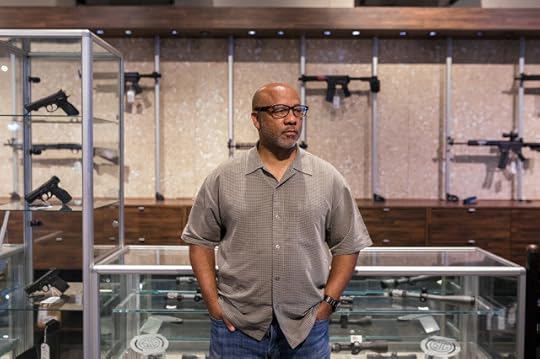 'The goal of the National African American Gun Association is to introduce black Americans to guns and also instruct them on how to use them. The association is at a crossroads, trying to decide whether to stay a community-oriented organization or get into the political fray.' -- Morning Edition
'The goal of the National African American Gun Association is to introduce black Americans to guns and also instruct them on how to use them. The association is at a crossroads, trying to decide whether to stay a community-oriented organization or get into the political fray.' -- Morning Edition
Published on July 10, 2019 20:24
July 9, 2019
After Prison: What Happens to Formerly Incarcerated Women?
 'After Maryam Henderson-Uloho was convicted of obstruction of justice, she was sentenced to 25 years in a Louisiana prison. Ultimately, she served 13 years—more than half of that time in solitary confinement. When she was released, she felt dehumanized. “You see, in prison, you’re broken—mentally, emotionally, and physically,” says Henderson-Uloho in the short documentary Sister Hearts. “I didn’t know what to do. I was alone. I was scared. I had no one.” An ex-felon, Henderson-Uloho was unable to open a bank account or a credit card. She couldn’t rent an apartment. Nobody would employ her. “I had to go inside myself and find something good about me,” she says. “I felt like trash … I needed help.” Sister Hearts was directed by Mohammad Gorjestani, in association with Even/Odd Films for Square.' -- The Atlantic
'After Maryam Henderson-Uloho was convicted of obstruction of justice, she was sentenced to 25 years in a Louisiana prison. Ultimately, she served 13 years—more than half of that time in solitary confinement. When she was released, she felt dehumanized. “You see, in prison, you’re broken—mentally, emotionally, and physically,” says Henderson-Uloho in the short documentary Sister Hearts. “I didn’t know what to do. I was alone. I was scared. I had no one.” An ex-felon, Henderson-Uloho was unable to open a bank account or a credit card. She couldn’t rent an apartment. Nobody would employ her. “I had to go inside myself and find something good about me,” she says. “I felt like trash … I needed help.” Sister Hearts was directed by Mohammad Gorjestani, in association with Even/Odd Films for Square.' -- The Atlantic
Published on July 09, 2019 21:06
The Chaotic Brilliance of Artist Jean-Michel Basquiat
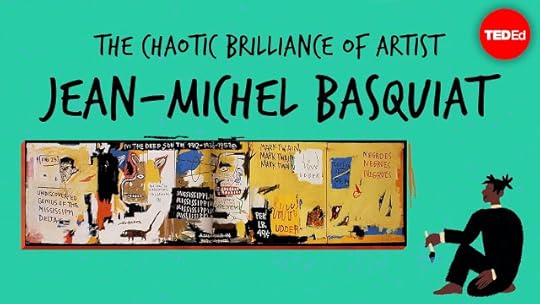 'Like Beat writers who composed their work by shredding and reassembling scraps of writing, artist Jean-Michel Basquiat used similar techniques to remix his materials. Pulling in splintered anatomy, reimagined historical scenes and skulls, he repurposed present day experiences and art history into an inventive visual language. Jordana Moore Saggese explores the chaotic and prolific art of Basquiat.' Directed by Héloïse Dorsan Rachet. --TED-Ed
'Like Beat writers who composed their work by shredding and reassembling scraps of writing, artist Jean-Michel Basquiat used similar techniques to remix his materials. Pulling in splintered anatomy, reimagined historical scenes and skulls, he repurposed present day experiences and art history into an inventive visual language. Jordana Moore Saggese explores the chaotic and prolific art of Basquiat.' Directed by Héloïse Dorsan Rachet. --TED-Ed
Published on July 09, 2019 21:01
The Horrific Untold Story of Trans ICE Detention
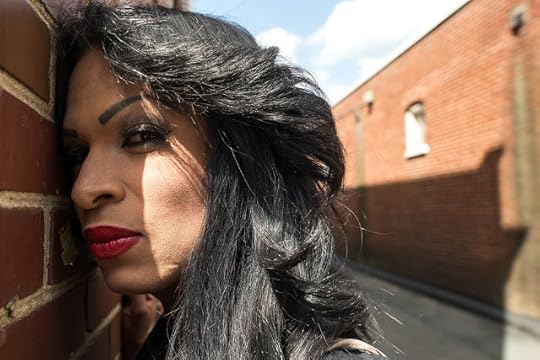 “I decided to come to the U.S. to save my life,” says Luz, a transgender asylum-seeker, in Sylvia Johnson’s short documentary. Luz entered the United States via an official port of entry and asked for protection through political asylum. She was promptly imprisoned. “I had already been imprisoned [in Honduras], and didn’t want to experience another situation like what I had been through,” she says in the film. "Luz's Story" was directed by Sylvia Johnson (http://www.freeroamingstudios.com). It is part of The Atlantic Selects, an online showcase of short documentaries from independent creators, curated by The Atlantic.
“I decided to come to the U.S. to save my life,” says Luz, a transgender asylum-seeker, in Sylvia Johnson’s short documentary. Luz entered the United States via an official port of entry and asked for protection through political asylum. She was promptly imprisoned. “I had already been imprisoned [in Honduras], and didn’t want to experience another situation like what I had been through,” she says in the film. "Luz's Story" was directed by Sylvia Johnson (http://www.freeroamingstudios.com). It is part of The Atlantic Selects, an online showcase of short documentaries from independent creators, curated by The Atlantic.
Published on July 09, 2019 20:54
Bomani Jones on Clickbait and the Future of Journalism
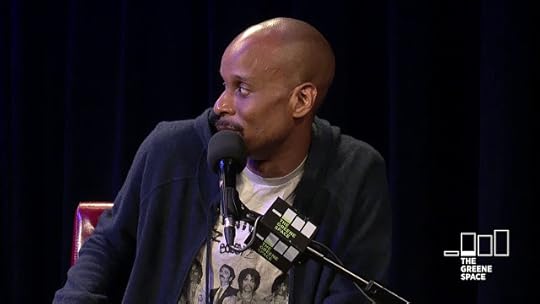 'Bomani Jones is a TV host, sports journalist and producer — and he’s also an early pioneer of podcasting. Aside from his work on ESPN, he also hosts the podcasts The Evening Jones, an audience-driven show about pop culture, and The Right Time, covering sports, culture and social issues.' -- The Greene Space at WNYC & WQXR
'Bomani Jones is a TV host, sports journalist and producer — and he’s also an early pioneer of podcasting. Aside from his work on ESPN, he also hosts the podcasts The Evening Jones, an audience-driven show about pop culture, and The Right Time, covering sports, culture and social issues.' -- The Greene Space at WNYC & WQXR
Published on July 09, 2019 20:47
Don Cheadle on Acting: Finding "Where You and This Character Meet"
 'Don Cheadle (Black Monday) joins Close Up with The Hollywood Reporter's Comedy Actors Roundtable to talk about how acting is a blend of personal life and fictional writing, on crossing the line in comedy then taking a step back, and more.'
'Don Cheadle (Black Monday) joins Close Up with The Hollywood Reporter's Comedy Actors Roundtable to talk about how acting is a blend of personal life and fictional writing, on crossing the line in comedy then taking a step back, and more.'
Published on July 09, 2019 20:42
Achille Mbembe: Borders in the Age of Networks
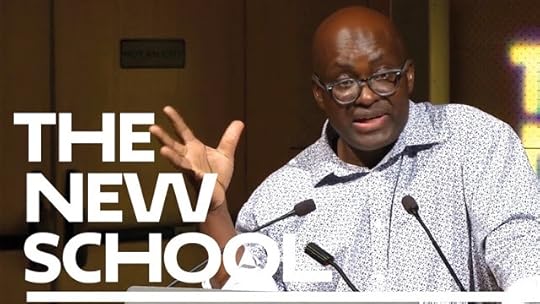 'The government of human mobility might well be the most important problem to confront the world during the first half of the twenty-first century. Worldwide, the combination of ‘fast capitalism’ and the saturation of the everyday by digital and computational technologies have led to the acceleration of speed and the intensification of connections. Ours is, in this regard, an era of planetary entanglement. Yet, wherever we look, the drive is also towards enclosure. The belief that the world would be safer if only risks, ambiguity and uncertainty could be controlled and identities fixed once for all and secured is gaining momentum. Risks management techniques as a means to govern mobility are proliferating. Carried by mobile bodies, the biometric border is extending into multiple realms of social life. Were this trend to persist, tomorrow’s world might be at risk of becoming a gated world, with myriad enclaves, culs-de-sacs and corridors. Here Achille Mbembe explores the consequences of these trends and examine the ways in which they shape and reshape an new 'Nomos of the Earth', the main features of which will be the object of our conversation.' -- The New School
'The government of human mobility might well be the most important problem to confront the world during the first half of the twenty-first century. Worldwide, the combination of ‘fast capitalism’ and the saturation of the everyday by digital and computational technologies have led to the acceleration of speed and the intensification of connections. Ours is, in this regard, an era of planetary entanglement. Yet, wherever we look, the drive is also towards enclosure. The belief that the world would be safer if only risks, ambiguity and uncertainty could be controlled and identities fixed once for all and secured is gaining momentum. Risks management techniques as a means to govern mobility are proliferating. Carried by mobile bodies, the biometric border is extending into multiple realms of social life. Were this trend to persist, tomorrow’s world might be at risk of becoming a gated world, with myriad enclaves, culs-de-sacs and corridors. Here Achille Mbembe explores the consequences of these trends and examine the ways in which they shape and reshape an new 'Nomos of the Earth', the main features of which will be the object of our conversation.' -- The New School
Published on July 09, 2019 20:36
Mark Anthony Neal's Blog
- Mark Anthony Neal's profile
- 30 followers
Mark Anthony Neal isn't a Goodreads Author
(yet),
but they
do have a blog,
so here are some recent posts imported from
their feed.



